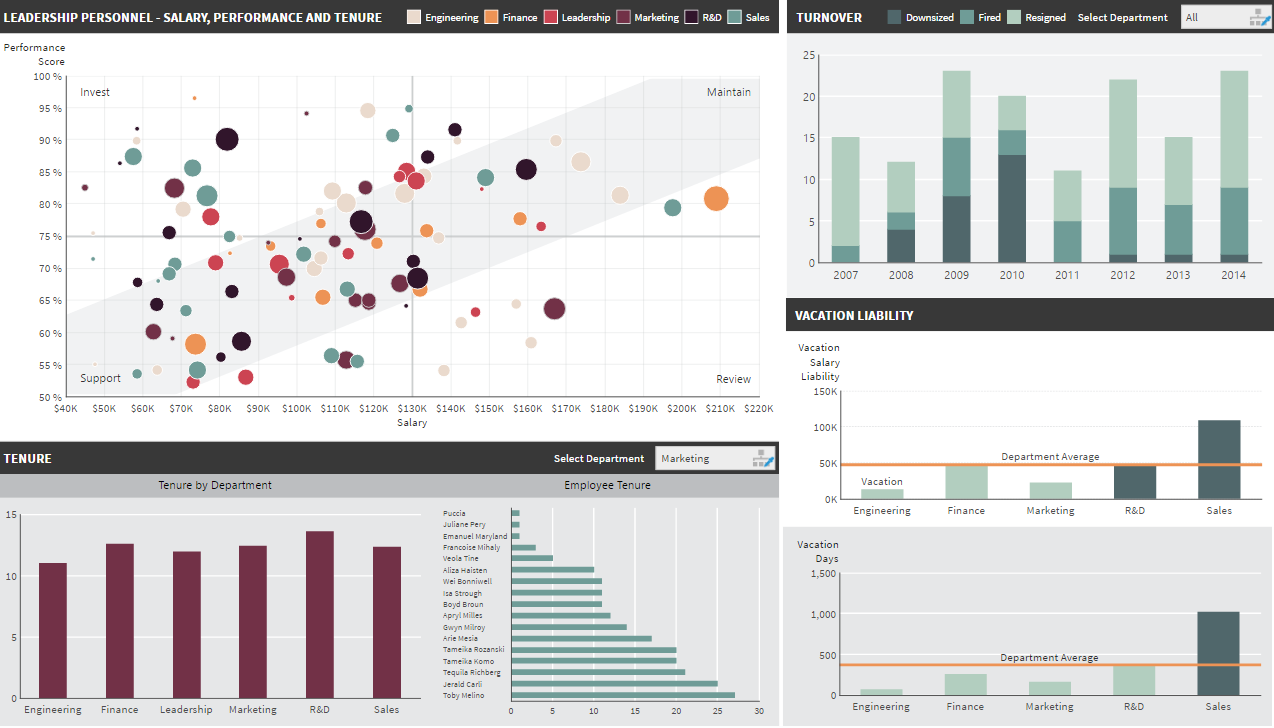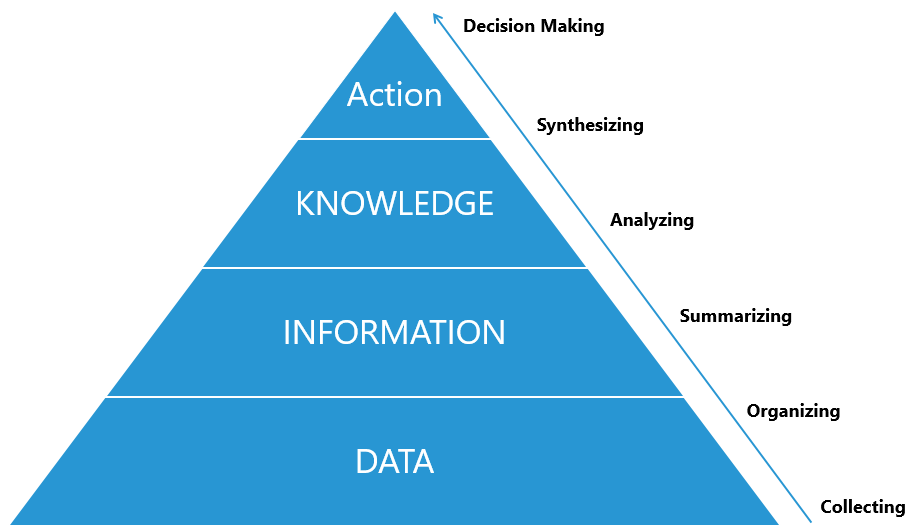Business Intelligence. You hear your boss utter those words and immediately your eyes are drawn to your notepad. Scribbled hastily between two reports is a 5x5 box; Synergy, Content-Driven, Value-Added, Fault Tolerant… One more and you can shout BINGO. A sigh of relief escapes as you realize Business Intelligence isn’t more jargon or reference to some arcane business process, but rather a term that albeit confusing, is very important.
What is Business Intelligence?
Whether you work for a SMB (small-to-midsize business), SME (small-to-midsize enterprise), or Large Enterprise, it’s highly unlikely the term Business Intelligence hasn’t been floated around once or twice. And while you’ve likely heard the term, it’s even more likely you’ve asked yourself on multiple occasions, what exactly is Business Intelligence? According to Gartner, Business Intelligence, fondly referred to as BI, is, “… An umbrella term that includes the applications, infrastructure and tools, and best practices that enable access to and analysis of information to improve and optimize decisions and performance”.
That is to say, Business Intelligence is a set of tools and techniques that transforms raw data, into useful and meaningful information, for the purpose of business analysis. It is, as coined by Howard Dresner, BI’s founding father, “Knowledge gained through the access and analysis of business information”. With BI, it is assumed that data, both market and internal, can be organized meaningfully and purposely, in a manner that can be interpreted by end-users.

1 - A BI dashboard is a data visualization tool, which can display the status of metrics and Key Performance Indicators (KPIs)
Purpose of Business Intelligence
On average, an adult makes 35,000 decisions per day. A great deal of our daily activities involves some form of decision-making, which is the result of an analytical process. In order to make a well-informed decision, it is import to be well-equipped with the necessary tools. A common goal between life and business, is to climb the DIKA pyramid as quickly as possible, in order to take action and make better decisions, faster.

This pyramid or hierarchy, loosely models the structural and functional relationship between Data, Information, Knowledge and Action. Business Intelligence, can be the tool that makes that possible. But remember, a Business Intelligence solution is only as effective as its strategy, for the hammer that shatters glass, forges steel.
As with all projects, Business Intelligence exists to achieve one (1) of three (3) objectives: Increase Revenue, Decrease Risk, and Decrease Costs.
Increase Revenue
Business Intelligence systems are often bountiful, and offer countless methods for increasing operational efficiencies. But how specifically can BI have a dramatic impact on an organization’s revenue growth? First and foremost, a successful BI implementation will enable users to deliver consistently factual information, derived from a unified data view. This means that every worker, every executive, and every manager will be using the same data when making decisions. Essentially, one version of the truth. This concept, coined the “Holy Grail” of information systems, refers to the idea that each manager in an organization has a universal understanding of precise corporate information, provided through a single set of reports. Business Intelligence as a concept, strives to provide the tools and skills necessary to exploit, discover, transform and analyze raw data, so that it can be used holistically throughout the organization.
In addition to this, Business Intelligence can provide organizations with a comprehensive overview on any number of Key Performance Indicators. This will allow for an analysis of data on a more granular level, and will encourage specific action to be taken. By tracking and managing organizational KPIs, it ensures that performance goals are definitively aligned with the overall objectives of the organization. This is the critical line, by which Business Intelligence is either successful in helping an organization become more data driven, or not.
Decrease Risk
The best predictor of future, is history. This premise holds true to BI, and the idea of predictive analytics. By identifying patterns in numbers, the organization will be better equipped to facilitate tactics on how to realize success. Business Intelligence will also enable the organization to measure actionable and significant data, thereby minimizing risk. Risk comes in all shapes and sizes, and be it strategic, operational, financial or reputational risk, BI can help to mitigate it.
For instance, let’s examine the insurance industry. As the market becomes increasingly more saturated, and the competition stiffens, consumer trust is resultantly decreasing as they have more choice than ever before. Henceforth, the ability to be able to accurately predict customer behavior in an attempt to identify new revenue streams, while simultaneously decreasing service expenditures, is highly sought after. If the insurer is able to compile historical data and mimic various risk profiles, they can more precisely carry-out a customer-centric strategy that focuses on specific target segments. Moreover, insurers are constantly faced with an ever-growing burden of regulatory compliance. As efforts to increase regulation continue, by directing their focus to the underlying analytics surrounding finance and administration, insurers can become more risk-averse and proactive when managing these market trends.
Decrease Costs
Unlike traditional projects, the ROI of business intelligence is extremely difficult to track before its actual implementation. However, the most tangible, realizable benefit is the reduction of labor costs. The amount of time and effort that can be saved with report automation and standardization, is paramount, albeit rarely the largest benefit. Since there are so many intangible benefits of Business Intelligence, more often than not, a reduction of labor costs is enough to justify considering. Here are some of the more common examples of cost reduction, as a result of Business Intelligence:
Cleaner Data
Data directly impacts bottom-line revenue, but like everything else of value, must be maintained in order to retain its effectiveness. By having cleaner data, organizations will have the most up-to-date, accurate customer information, and can be sure they are smartly allocating resources.
Automated Report Generation & Data Collection
An immediate byproduct of automated report generation, is the reduction of user development and training costs. Business Intelligence can quantify the man-hours required to successfully achieve organizational objectives.
Less Dependence on IT
With the emergence of Self-Service Business Intelligence solutions, business users can easily create ad-hoc reports and discover deeper insights into their data, more quickly. Better decisions are backed by better data, however if it’s a marathon to acquire that data, the more difficult and costly it becomes to discern good decisions from great decisions.
Faster, Better Decision-Making
Business Intelligence leverages critical information and empowers users to make smart, proactive, and better business decisions at every level of the organization, in a myriad of business streams. Better decisions can provide enormous benefits, whereas poor decisions can lead to none – which may even incur more losses.
Chances are your organization is familiar with Business Intelligence to some extent. According to Forrester Research, 81% of businesses use Microsoft Excel, which is the world’s most popular spreadsheet package, and subsequently, BI product. The real question to ask yourself, is whether or not your BI is achieving one the aforementioned 3 goals. If the answer is NO, then you should consider why it isn’t working for you, and how you could fulfil the positive impact BI can have for you and your organization. Be it increased data accuracy, the complexity in analyzing new questions, or the ability to improve the ease by which users who need BI can consume it – in today’s business world you will quickly fall behind without the ability to take data-driven actions.


Follow Us
Support